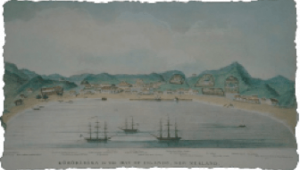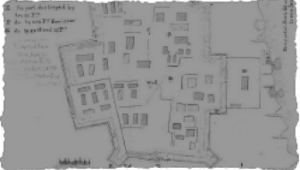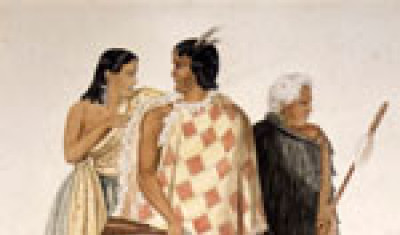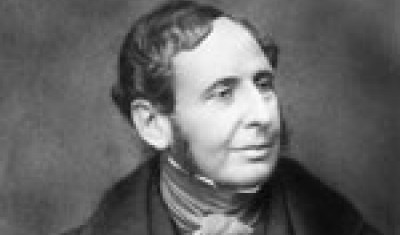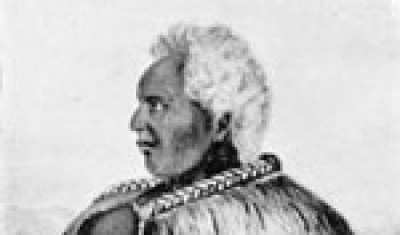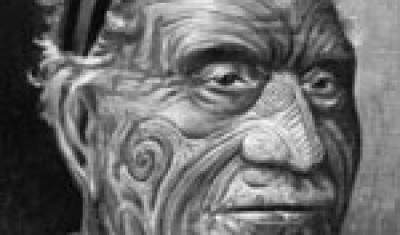
British withdraw at
Pukututu (Te Kahika Pā)
(8 May 1845)



In consultation with Tāmati Wāka Nene, the officers commanding the British forces decided to march inland. They sought to destroy Heke and his supporters, who had built a new pā on the shores of Lake Ōmāpere. The British were ignorant of the strength of Heke’s position. His new pā was cleverly designed, with firing trenches and strong palisades padded with flax to protect against musket balls.
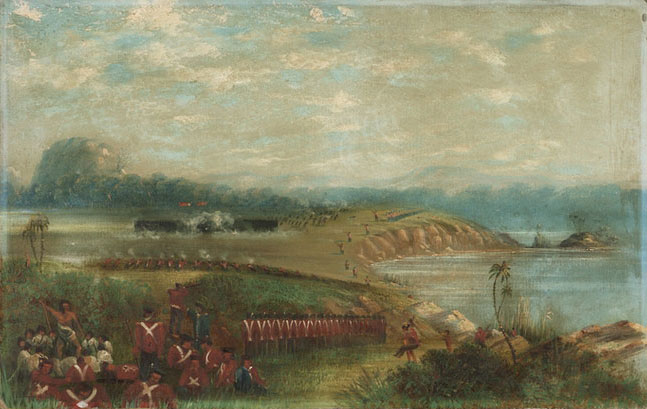
The fighting at Puketutu. Te Kahika Pā is in the middle ground.
By G. H. Page. From the Alexander Turnbull Library ref. B-081-006
There were loopholes at ground level, which allowed Heke’s men to fire at the enemy from trenches behind the palisades. However the pā was not finished, and there were weaker points at the rear.
The march inland proved arduous for the poorly-equipped British troops. The route was rough, they had no tents, and their biscuit ration was spoilt by the rain. Nene and his men provided much-needed assistance to the British column moving through the bush, although they did not participate in the battle itself.
The British arrived at the pā on 8 May and realised with some dismay that heavy artillery would have been very useful. They did have some 3-pounder Congreve rockets. Of the 12 rockets fired, only one actually hit the pā and it did very little damage. Having failed to breach the defences, the British attempted a direct infantry assault. The troops advanced towards the pā with bayonets fixed, only to encounter a war party led by Kawiti. After some vicious hand-to-hand fighting, Kawiti and his men were driven back. At that point, a party sallied out from the pā to give Kawiti time to re-group. Ralph Johnson (2006:251) explains the strategy of the defenders:
The interplay of firepower from the pā and surprise attacks was orchestrated by using pre-arranged signals, in this case flags ... the actions of Heke and Kawiti were orchestrated by the raising and lowering of flags on the two flagpoles inside Te Kahika Pā.1
The British troops were caught between two enemy lines, and after hours of skirmishing, had no chance of gaining the pā. They had no choice but to withdraw from the battlefield. The following day, lacking food and burdened with 40 wounded, the troops marched back towards the coast.
Both sides suffered a significant number of casualties. About thirteen British soldiers were killed, many of whom were left behind. They were buried by Reverend Burrows assisted by a party of Heke’s men. Māori fatalities seem to have been somewhat higher than the British. Kawiti himself lost one of his sons, Taura, during the fighting.2
Heke wrote to Governor Fitzroy after the Battle of Puketutu, inviting him to come north to talk about making peace. Fitzroy did not reply. He was determined to punish all who “rebelled” against the Crown, to force them to atone for the loss of Kororāreka.
